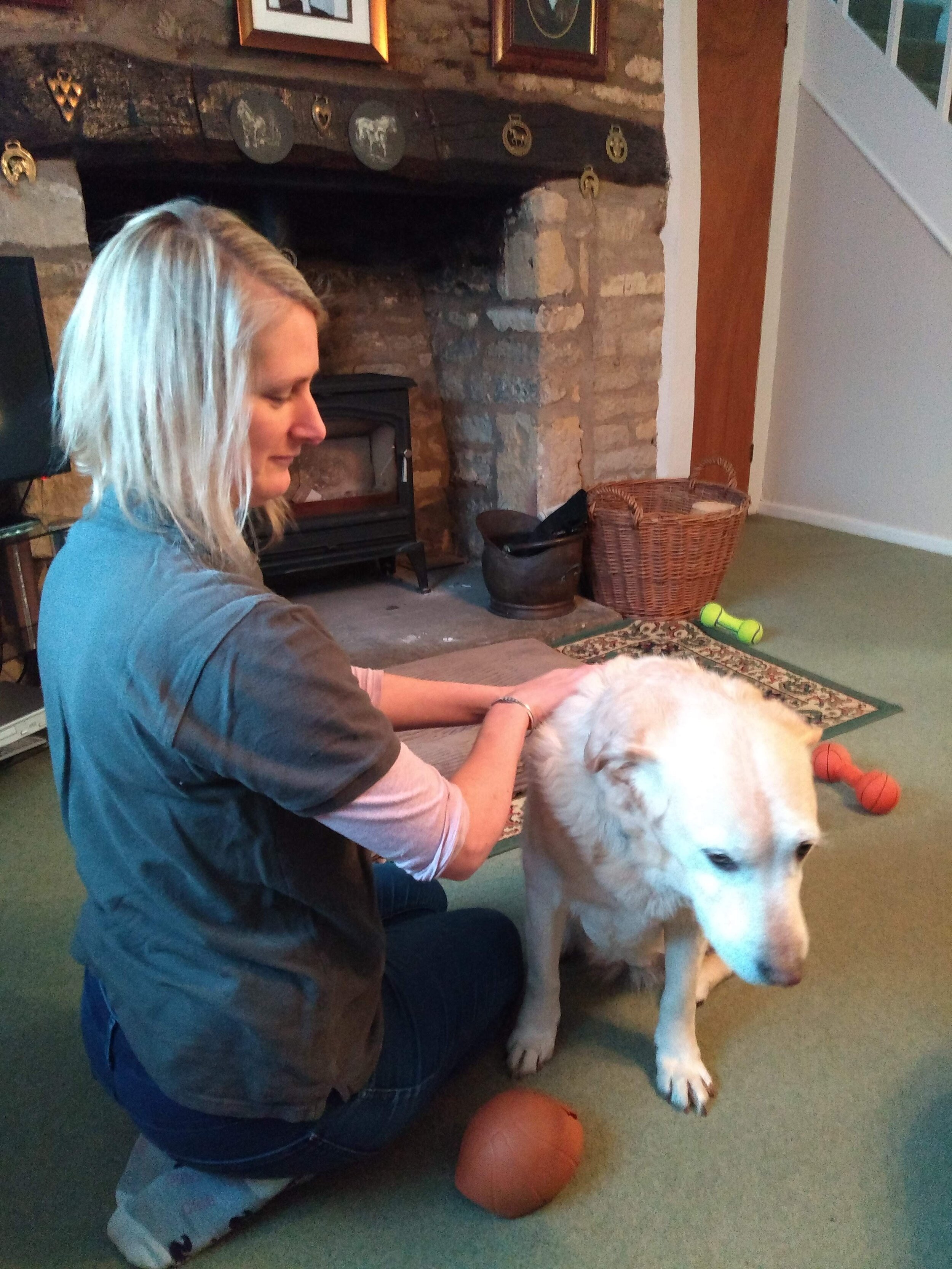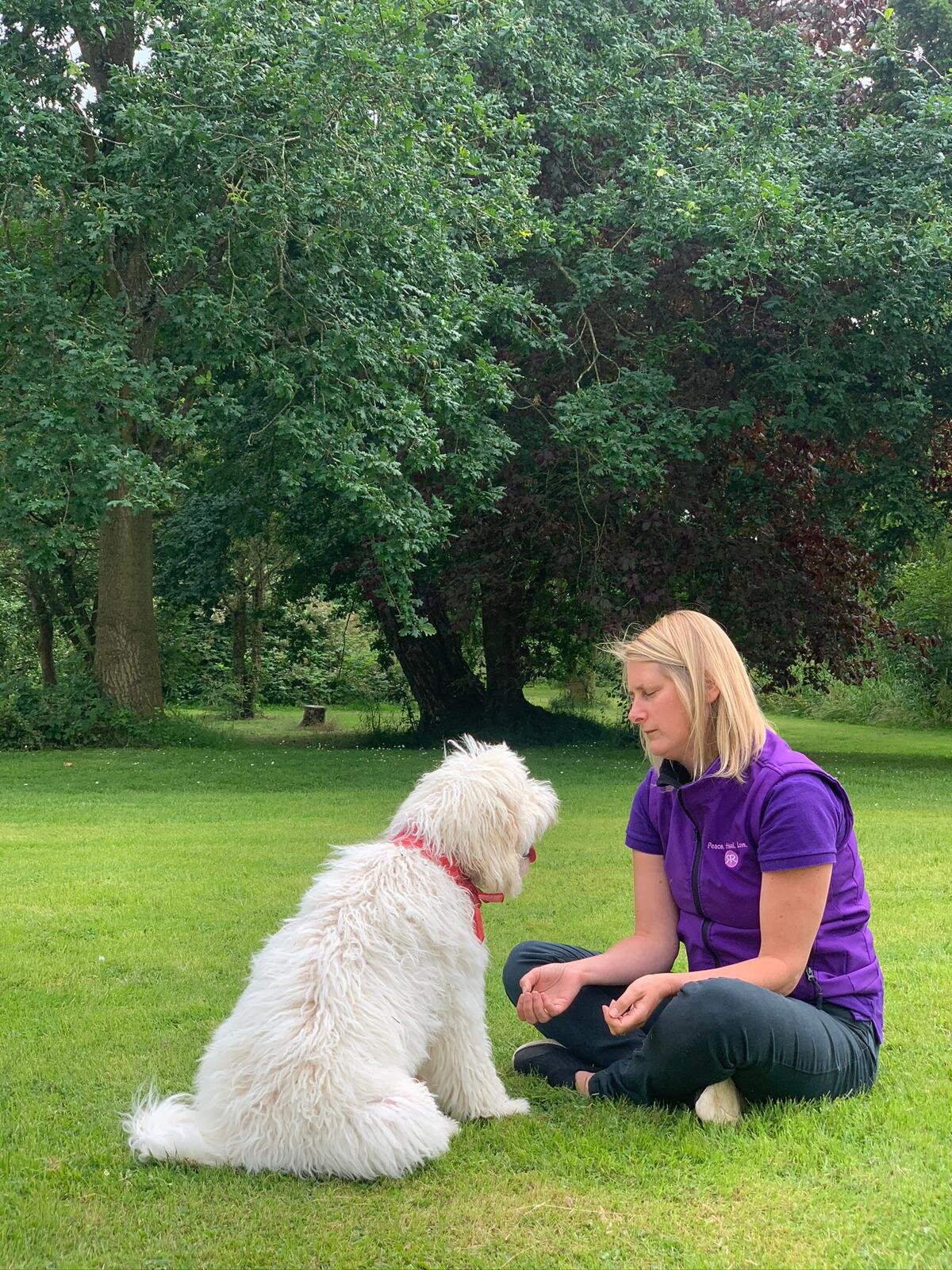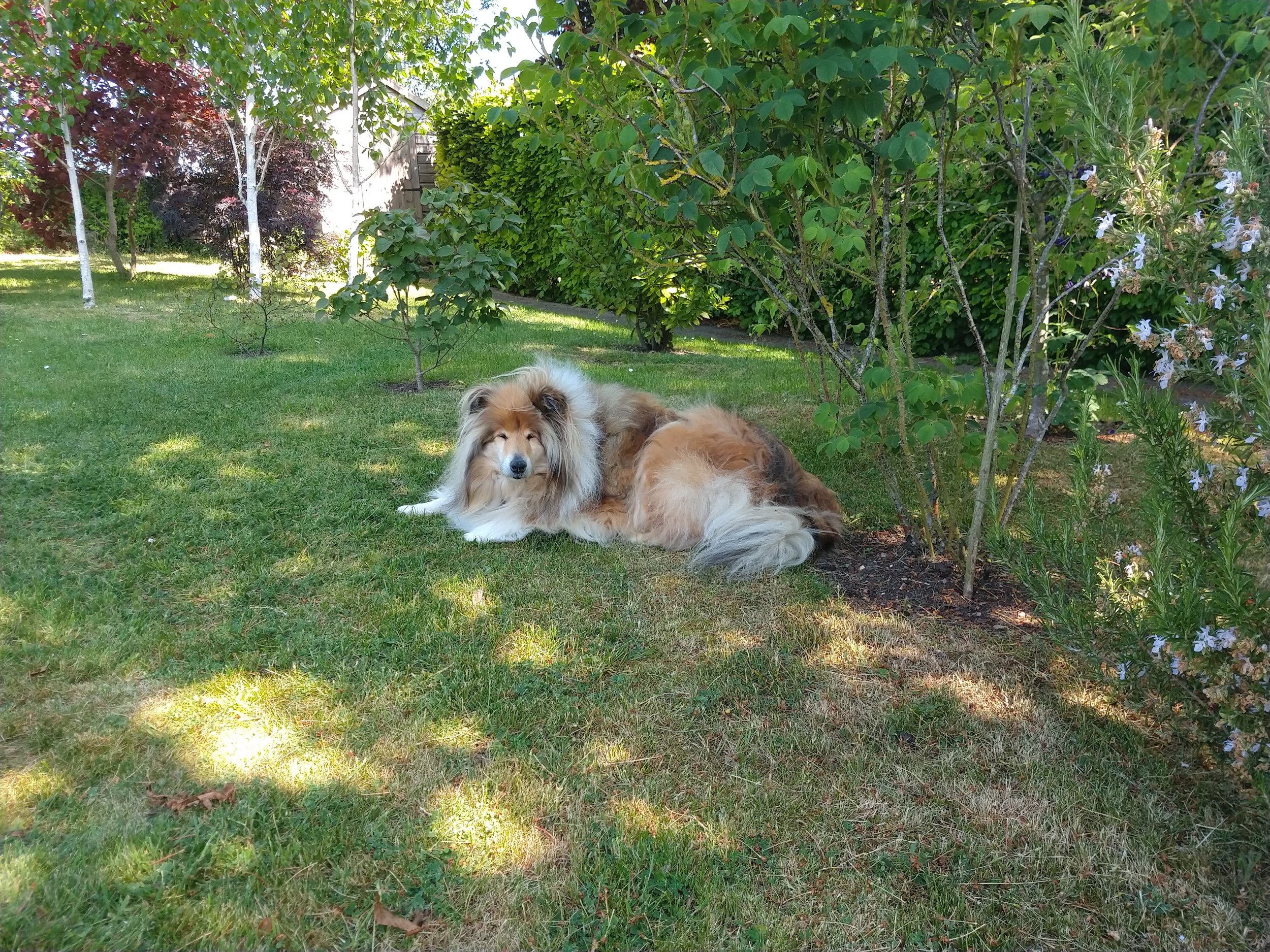Bowen Technique
The Bowen technique is a gentle form of bodywork, developed in Australia during the 1950's and 1960's by the late Tom Bowen.
Bowen is an extremely versatile therapy with many procedures available that can be applied to different situations depending on the needs of the individual. For example, we may need to conduct the hamstring procedure or we may need to address your pelvic alignment depending on the problems you are experiencing.
Ultimately the technique helps the body to balance and re-align itself on many levels, it is truly holistic in that we might be treating something very specific but this will also have an impact upon other difficulties that you are experiencing.
The results experienced with Bowen are often remarkable, sometimes even after the first session.
Bowen works on skin, muscles, tendons, ligaments and nerves. A Bowen treatment will also address deeper levels of the body including fascia and the skeleton. These moves work directly with the body's fascia and send signals via your nervous system which helps your body retrieve its memory of a relaxed and balanced state of being.
Sessions are gentle and non invasive. Bowen moves are made over specific points of the body either on the skin or through light clothing with frequent pauses giving the body time to benefit from each set of mevements. Treatment is suitable for all age groups and many pregnant women have benefited from Bowen. Bowen can be performed on babies, children and even animals such as horses and dogs and cats.
By working on the muscles and fascia together we can affect the way the body structure works. The fascia is the sheet of connective tissue that covers the structures of the body responsible for your posture and allows flexibility and movement between various parts of the body. For example, correcting the way we hold our spine will help you adopt a less painful posture.
Rebecca is a member of the Bowen Association UK. Practitioners have to adhere to a strict code of professional conduct, are fully trained in the Bowen Technique, hold an Anatomy and Physiology qualification, first aid certificate and undergo postgraduate training.
COMMON QUESTIONS ABOUT BOWEN
How does Bowen work?
In a Bowen session we apply light moves to specific places on the body either on the skin or through light clothing. Moves are made on skin, muscles, tendons, ligaments and nerves. A Bowen treatment will also address deeper levels of the body including fascia and skeleton. These moves work directly with the body's fascia and send signals via your nervous system which helps your body retrieve its memory of a relaxed state of being.
What do I have to do during the treatment?
The most important thing is that you are comfortable, for some moves you will lie on a massage table and for some treatments you will sit or stand.
How long will it last?
Treatments last usually for one hour with time either side for getting comfortable, warm and relaxed and discussing your requirements
What problems can Bowen treat?
Allergies
Baby and childhood problems
Back problems
Bladder problems including bedwetting
Bowel and digestive problems
Dizziness
Ear problems
Emotional problems
Fatigue
Fluid retention
Foot problems
Frozen shoulder
Headaches, migraines and sinus problems
Jaw problems
Knee and hip misalignments
Menstrual and hormone problems
Pelvic tilt, leg length and hip imbalance
Poor mobility
Respiratory problems
Skeletal and muscular problems
Sports injuries
Stress
Will the therapist touch me?
Yes. Bowen works on the muscles, tendons, ligaments and fascia. Gentle rolling movements are performed usually on skin, but can be done over loose clothing if required. Your body is always covered as you are draped with towels and blankets.
How will I feel afterwards?
Relaxed.
What does Bowen feel like?
It feels like gentle touch sometimes you feel the muscle groups move but it is not usually uncomfortable.
Canine Bowen Technique
Canine Bowen Technique (CBT) is a soft-tissue remedial therapy involving ‘light-touch’ moves of fingers or thumbs over muscle, ligament, tendon and/or fascia at specific points of the dog’s body. The work is very subtle and involves no hard or prolonged pressure. It offers dogs a gentle, non-invasive and effective hands-on technique that aims to promote healing, pain-relief and body/energy rebalancing.
We work with in collaboration with your Veterinary Surgeon and will need your Vet to complete and sign a form before we start working with your dog.
What Is Canine Bowen Technique ?
Canine Bowen Technique (CBT) is based on the principles of the Bowen Technique, a successful human therapy named after its developer, Tom Bowen (1916-1982), which was developed in Australia during the 1950’s, and brought to the UK in the early 1990’s. Its adaptation in the UK for use on dogs was started in 2001 by Bowen therapists and dog trainers/behaviourists Sally and Ron Askew, who started on their own dogs, and then, with the cooperation and support of their local vets, integrated their findings into their canine behavioural and rehabilitation work with great success.
A key feature of Canine Bowen Technique is that the treatment is never forced on the dog - in fact provoking the body into a fearful or defensive reaction is very much counter-productive to maximising the effects of the treatment.
One of the major principles of Canine Bowen Technique - indeed any complementary therapy, human or animal - is that it is holistic. In other words, it “treats the body as a whole, without referral to named disease”.We do not treat the veterinary-diagnosed disease or condition per se, but treat the dog, as they see it, on the day.
For example, although a dog may be brought with a condition such as rear-leg lameness, we may well treat other parts of the body as well, including the back, neck, and front-legs, in order to address other possible problem areas caused as a result of the dog compensating for the presenting condition. In this case the dog may well have tried to shift its weight forward in order to relieve the pain in the rear-legs, but this, in turn, will affect the carriage of the head and neck, and require the front-legs to carry more load. By addressing these other areas, we are maximising the dog’s attempts to return its body to proper balance.
What happens in a Canine Bowen Technique session ?
Using fingers and thumbs on precise points on the dog’s body, we apply gentle rolling movements over soft tissue (muscles, ligaments, tendons, fascia, and skin). The move is not a flick, but done slowly and with very gentle pressure so as to just disturb the underlying tissue and create a focus for the brain to work on.
There is no hard manipulation, no pulling or cracking of joints, no insertion of needles, no massaging with oils.
Although a typical consultation will last up to about an hour, while the therapist gets to know more about you and your dog, and your dog can get accustomed to and relaxed with the therapist, the actual hands-on part of the session will usually last no more than about 20 minutes. Over the following 3-4 days the dog may experience reactions as its body continues to assimilate the effects of the Canine Bowen Technique moves and realigns/rebalances itself. This healing process continues for about 7 days until treatment is continued.
During the treatment session, there are short intervals -determined either by the dog or by the therapist - which allow the dog to absorb the information given by the gentle moves, and allow fine adjustments to take place within its body. Dogs are much more in tune with their bodies than humans, and generally know for themselves when to “take a break”, and when to come back for more. Often, after just a few moves, they will wander off and just stare blankly into space, or go somewhere for a short lie-down.
Therapy is never forced on the dog - this will only serve to make the dog less receptive and will be counter-productive to the outcome. So an important part of Canine Bowen Technique is recognising and respecting when the dog indicates it has received what it needs.
At the start of a Canine Bowen Technique session, there will need to be time to allow the dog to accept and trust the therapist. For very nervous dogs, most of the time of a first Canine Bowen Technique session may well be spent solely on developing this relationship and very little Bowen work may be done. However, after getting accustomed to Canine Bowen Technique, most dogs will want it more and more, and many will come over and position themselves to indicate where they’d like the work doing.
Why Use Canine Bowen Technique ?
Canine Bowen Technique aims to promote and support the body’s own powers of self-healing and as a result may be very useful for dogs with problems in the following areas :
Acute injury eg sprains and strains.
Chronic conditions and degenerative disease - helping to improve the dog’s quality of life.
Rescue/re-homed dogs - relaxation of tension caused by earlier stress and trauma.
Pre– and post-operative surgery - assisting recovery times.
Fear-based anxiety - such as fireworks and thunderstorms.
However, we will not claim to be able to “cure” a problem. Our aim instead is to facilitate the marshalling and channelling of the dog’s own resources so that it can determine how to heal itself. In this respect, therefore, Canine Bowen Technique can be almost all-embracing in its coverage.
Although generally regarded as a ‘remedial’ therapy, Canine Bowen Technique can also be used to good effect as a maintenance and prevention therapy, helping to keep the body in optimum balance. To this end, it may be very beneficial for active, hard-working dogs or dogs used for competitions in obedience, agility, or trialling.
Common conditions which are often presented at Canine Bowen Technique sessions include :
Allergies and Skin conditions
Arthritis and Muscular Sprains & Strains
Back problems
Lameness and other Gait problems
Hip & Elbow Dysplasia
Working or Competition dogs
Dogs that pull on the lead
Aggression and other Behavioural problems
Stress & Anxiety disorders
Cystitis & Urinary disorders
Recurrent Ear problems
Sciatica
Aftercare Advice
A Bowen treatment is a partnership. When treating humans it is a two-way partnership - between therapist and client. With dogs it is a three-way partnership - between therapist, dog, and owner.
We will give you some post-session advice with regard to your dog and how it should be looked after over the following few days. Carrying out these aftercare recommendations is just as much a part of the treatment as the hands-on session. If the owner is unwilling to abide by these instructions then the effect of the session will be wasted.
For instance, after a Canine Bowen Technique session, most dogs will probably feel tired and want to go off somewhere quiet and have a nap. This is very good news, since sleep is the time when most of the body’s repair actions take place, and the dog’s apparent tiredness shows it is accepting the Bowen work. If, however, the owner insists that their dog accompany them on a long walk, then the dog will not get the time it needs to repair itself, and may well reinjure itself as well.
Here is the lovely Abbey on my first visit to her for Canine Bowen Technique. See the next video for an update!
Here is the lovely Abbey, on her holidays, after 4 sessions of Canine Bowen Technique. As you can see, she is doing very well!
Two years ago, Lottie was referred to a specialist Vets that wanted to perform surgery on her spine, she didn’t have surgery. Since then, alongside first opinion Veterinary care and medication, she has been having Canine Bowen Technique and has recovered and is progressing marvelously well. Just look at her go!
Above is a snapshot of a Canine Bowen Technique session, filmed by the lovely Bobby’s owner to capture an example of how we work. Please note, I know Bob very well and we have already built a relationship of trust together. He knows he can walk away and take a break, which he does often during our sessions.
Above is our working area. Please get in touch if you are out of area and still like to be seen, this might be able to be arranged.





